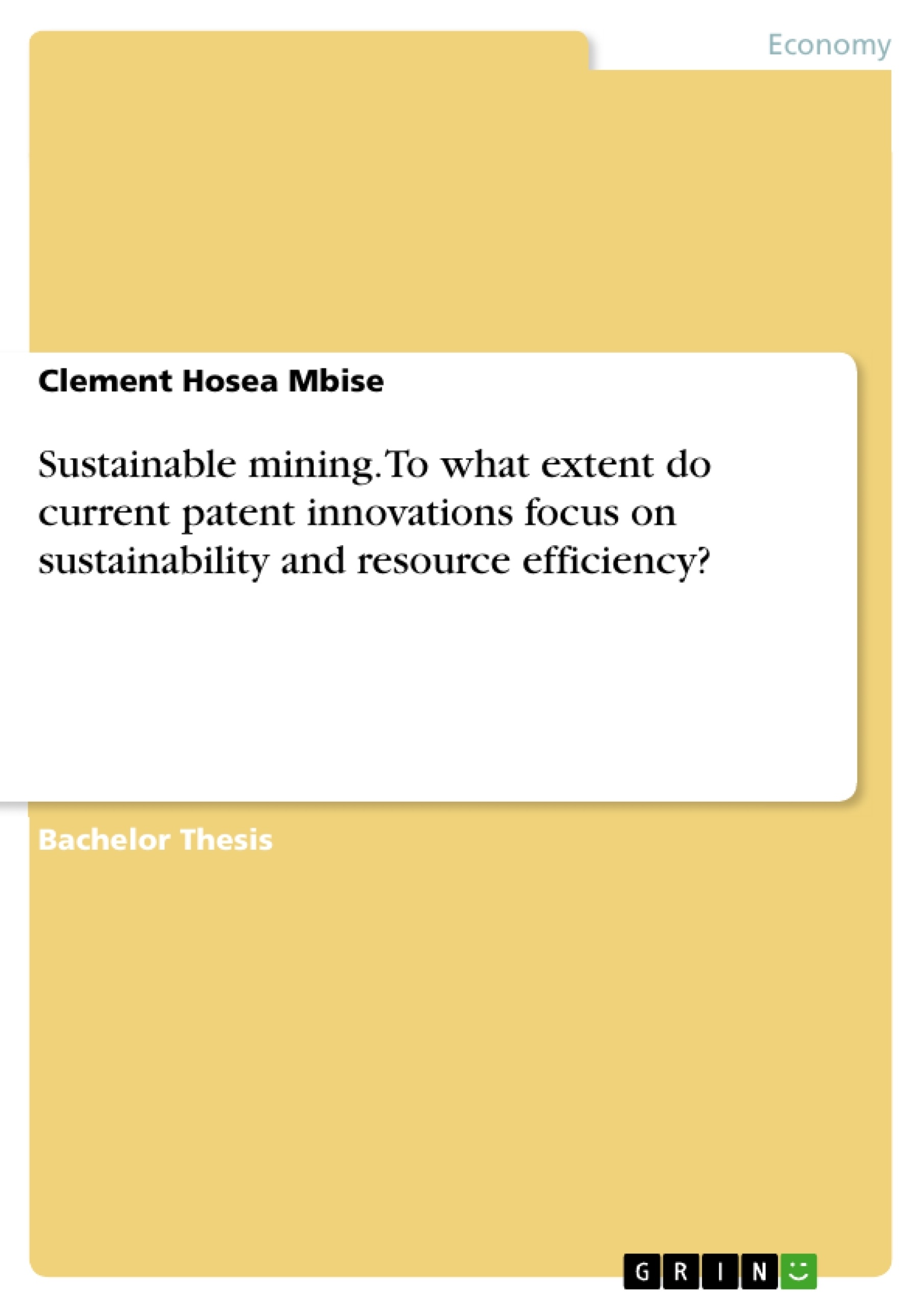This thesis examines patent documents as sources of eco-innovations that would improve the sector. In this thesis, European and United States patent offices have been used as data bases. It follows that a total of 51 patent documents were obtained from US patent office and 128 patent documents from European patent office. However 45 patent documents were suitable for cross-sectional analysis through content analysis.
Researcher’s findings from 45 patents that were analyzed show that innovations in sustainability seem to be an area of interest amongst inventors. On the other hand, trends and patterns show that innovations in energy efficiency and sustainability have been issued more compared to waste management innovations. The researcher explains the logic that since energy efficient innovations and sustainability innovations aim to reduce pollution and wastes, hence little can be paid waste management innovations rather than to be ignored.
Eco-innovations are being regarded as essential products or processes that not only help in fostering sustainable development but also help in creating and enhancing new business opportunities. Over the years, the public view of the mining sector has been negative due to the pollution it brings. Therefore the sector is challenged to show that it can contribute to the welfare by minimizing pollution through eco-innovations.
Inhaltsverzeichnis (Table of Contents)
- Chapter 1: Introduction
- 1.1 Background
- 1.2 Problem statement
- 1.3 Purpose of this study
- 1.4 Methodology
- 1.5 Contribution of the research
- 1.6 Limitations
- Chapter 2: Literature Review
- 2.1 Introduction
- 2.2 Business and sustainability
- 2.3 Business in Resource Constrained Environment (R.C.E.)
- 2.4 Mining industry overview
- 2.5 Sustainable mining
- 2.6 Sustainable mining frameworks
- 2.7 Mining Operations in developing countries
- 2.8 Mining operations in developed countries
- 2.9 Current tailing and waste management practices
- 2.10 Current innovation in mining sector
- 2.11 Best Practice in the mining sector
- 2.12 Other Innovations that would enhance the mining sector
- 2.13 Reasons why Mining firms should adopt sustainability practices and clean production
- 2.14 Literature summary
- Chapter 3.0: Methodology
- 3.1 Introduction
- 3.2 Research Ontology
- 3.3 Research Epistemology
- 3.4 Research Design:
- 3.5 Research Methods
- 3.6 Ethical considerations
- 3.7 Content Analysis and Documentation
- 3.8 Conducting content analysis research
Zielsetzung und Themenschwerpunkte (Objectives and Key Themes)
This dissertation examines the role of patent innovations in promoting sustainability and resource efficiency within the mining sector. It aims to determine the extent to which current patent innovations contribute to the sector's sustainability and resource efficiency goals. The research analyzes patent documents from the United States Patent Office (USPTO) and the European Patent Office (EPO) to identify and analyze trends and patterns in eco-innovations.
- The role of patent innovations in promoting sustainability in the mining sector
- The extent to which current patent innovations contribute to resource efficiency
- Analysis of trends and patterns in eco-innovations within the mining sector
- Evaluation of the effectiveness of current sustainability practices and clean production methods in the mining industry
- Identification of challenges and opportunities related to implementing sustainable practices in the mining sector
Zusammenfassung der Kapitel (Chapter Summaries)
Chapter 1 provides an introduction to the topic of sustainability in the mining sector, outlining the problem statement, purpose of the study, methodology, contribution of the research, and limitations. Chapter 2 delves into a comprehensive literature review, exploring concepts like business and sustainability, resource-constrained environments, the mining industry overview, sustainable mining frameworks, and current innovation practices within the sector. It also examines best practices and reasons why mining firms should adopt sustainability practices and clean production methods. Chapter 3 outlines the methodology employed in the research, detailing the research ontology, epistemology, design, methods, ethical considerations, and content analysis approach.
Schlüsselwörter (Keywords)
Sustainability, mining sector, patent innovations, resource efficiency, eco-innovations, pollution, waste management, energy efficiency, content analysis, United States Patent Office (USPTO), European Patent Office (EPO).
- Citation du texte
- Clement Hosea Mbise (Auteur), 2016, Sustainable mining. To what extent do current patent innovations focus on sustainability and resource efficiency?, Munich, GRIN Verlag, https://www.grin.com/document/471495



